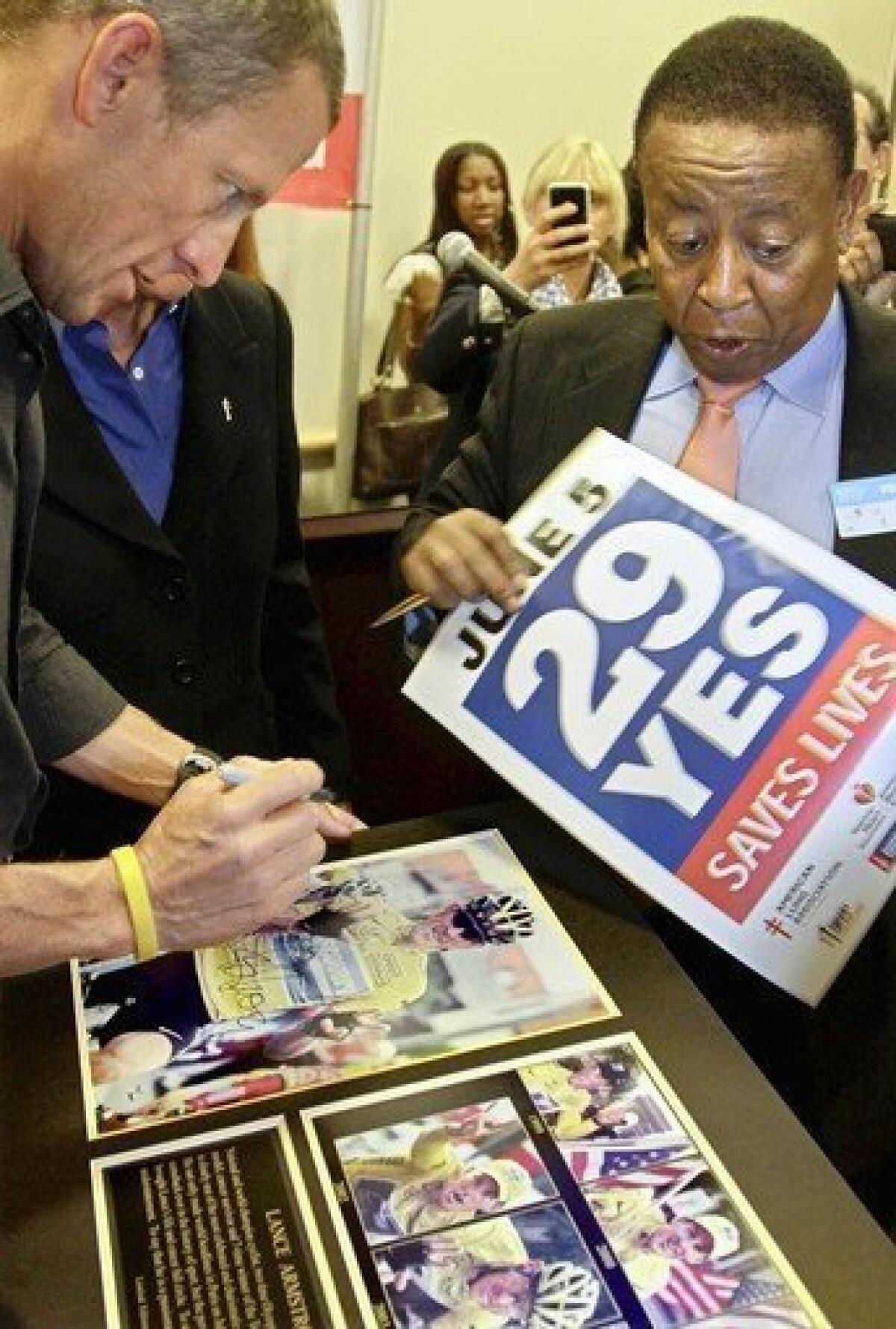Californians to test new primary system

- Share via
SACRAMENTO — Californians heading to the polls Tuesday will decide whether to tweak term limits for state lawmakers and raise cigarette taxes to fund cancer research — even as they try out a revamped primary system designed to reduce partisan gridlock here and in Washington.
Under new primary rules, the top two finishers in races for state and federal offices will face off in November, regardless of party affiliation. The presidential contest is an exception. Candidates also are competing in new voting districts drawn by a citizens panel rather than the Legislature, which formerly engineered those districts to protect incumbents and maintain the influence of party bosses.
The outcome could reshape the way power is wielded in two capitals long defined by gridlock and brinkmanship. If more moderates are elected, it could eventually break the hold of labor unions on Democrats and anti-tax groups on Republicans.
In Sacramento, a more centrist Legislature could mean an end to protracted budget wars as lawmakers find ways to resolve the state’s chronic multibillion-dollar deficits.
Despite the reconstituted state landscape, the election in some ways also represents business as usual, with corporate interests and labor unions spending big and campaigning hard to retain their clout.
“We’ve changed a few of the important rules of the game in California,” said Thad Kousser, a political scientist at UC San Diego. “The question is whether changing the rules really changes the game when all the players are the same.”
The tobacco initiative, in particular, is a reminder of the power of well-heeled interests. Philip Morris USA and R.J. Reynolds Tobacco Co. have saturated the airwaves in a nearly $47-million advertising war over Proposition 29. The companies are battling the American Cancer Society and seven-time Tour de France winner Lance Armstrong, who are trying to pass a $1-per-pack tax hike on cigarettes.
Tobacco interests have repeatedly beat back attempts by lawmakers to hike cigarette taxes: The Legislature hasn’t raised them since 1994, and state voters last did so at the ballot box 14 years ago.
The measure is backed by health advocates and cancer survivor Armstrong, who donated $1.5 million to the Yes on Proposition 29 campaign. Supporters have raised more than $12 million altogether.
At its outset, Proposition 29 had overwhelming support. But as the industry mounted its ad blitz — complete with spots featuring people in white lab coats arguing against it as the seed of a new bureaucracy — the gap has narrowed, opinion polls show. The measure’s backers say the ads are misleading.
Labor unions and developers joined forces in a lower-profile effort to rewrite the state’s term limits law, enraging conservative activists who say proponents are using distorted arguments to undermine the curbs put in place by voters 22 years ago. Proposition 28 marks the third time in a decade that voters have been asked to reconsider term limits.
The measure would subtract two years from the time state lawmakers could stay in the Legislature but allow all of it to be served in one house. The proposal could effectively increase the power of incumbents as they remain in a single office longer.
The term-limits measure highlights the sometimes unintended consequences of political change.
Proponents of the original initiative argued that limiting lawmakers’ time in the Legislature would force out entrenched incumbents and give rise to more “citizen legislators.”
But supporters of the new measure, including good-government groups, say the term-limits era has yielded inexperienced lawmakers who rely on lobbyists for guidance and spend too much time fundraising for their next political office. Lawmakers used those arguments when they pushed a similar measure in 2008. Voters rejected it.
On Tuesday, Californians will choose nominees for 53 congressional, 20 state Senate and 80 state Assembly seats. And they will also pick candidates for president, although the new regimen will not apply in that contest — the party process remains unchanged.
Traditional rules also prevail in the races that L.A. County voters will decide, among them three county supervisor seats and a six-way battle for district attorney.
In candidate contests, the new state election rules have given rise to what could be the most expensive House race in the country, the San Fernando Valley fight between incumbent Democratic Reps. Howard Berman and Brad Sherman. Competing in a new district that incorporates pieces of their existing districts, the pair have attracted more than $8 million in support of their candidacies.
Business and labor groups have dumped millions of dollars into political action committees to influence a handful of contested state legislative seats.
According to the secretary of state’s office, independent spending on legislative races, nearly $14 million, is about twice the amount spent in the last election, two years ago.
Times staff writer Jean Merl contributed to this report.
More to Read
Get the L.A. Times Politics newsletter
Deeply reported insights into legislation, politics and policy from Sacramento, Washington and beyond. In your inbox twice per week.
You may occasionally receive promotional content from the Los Angeles Times.










